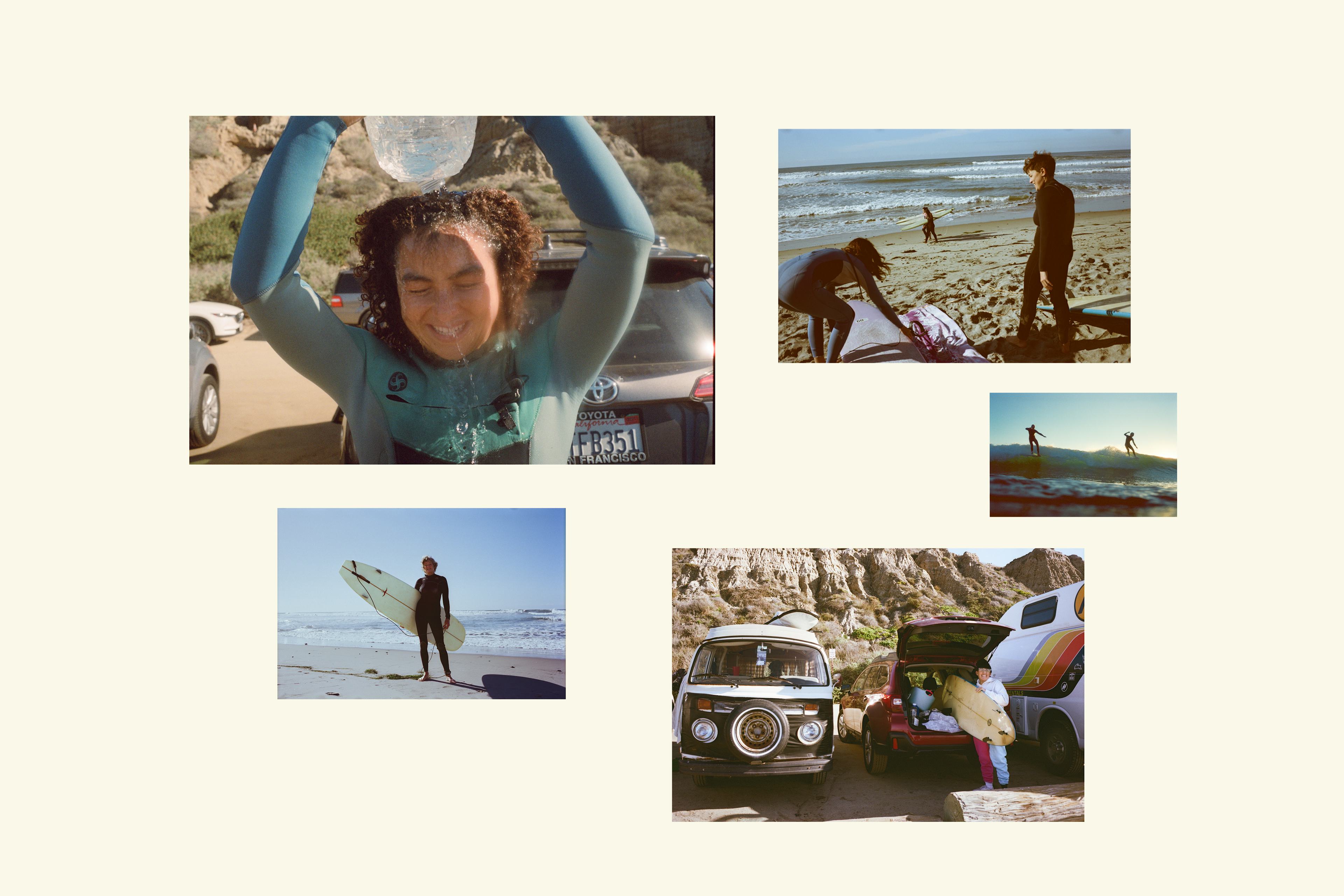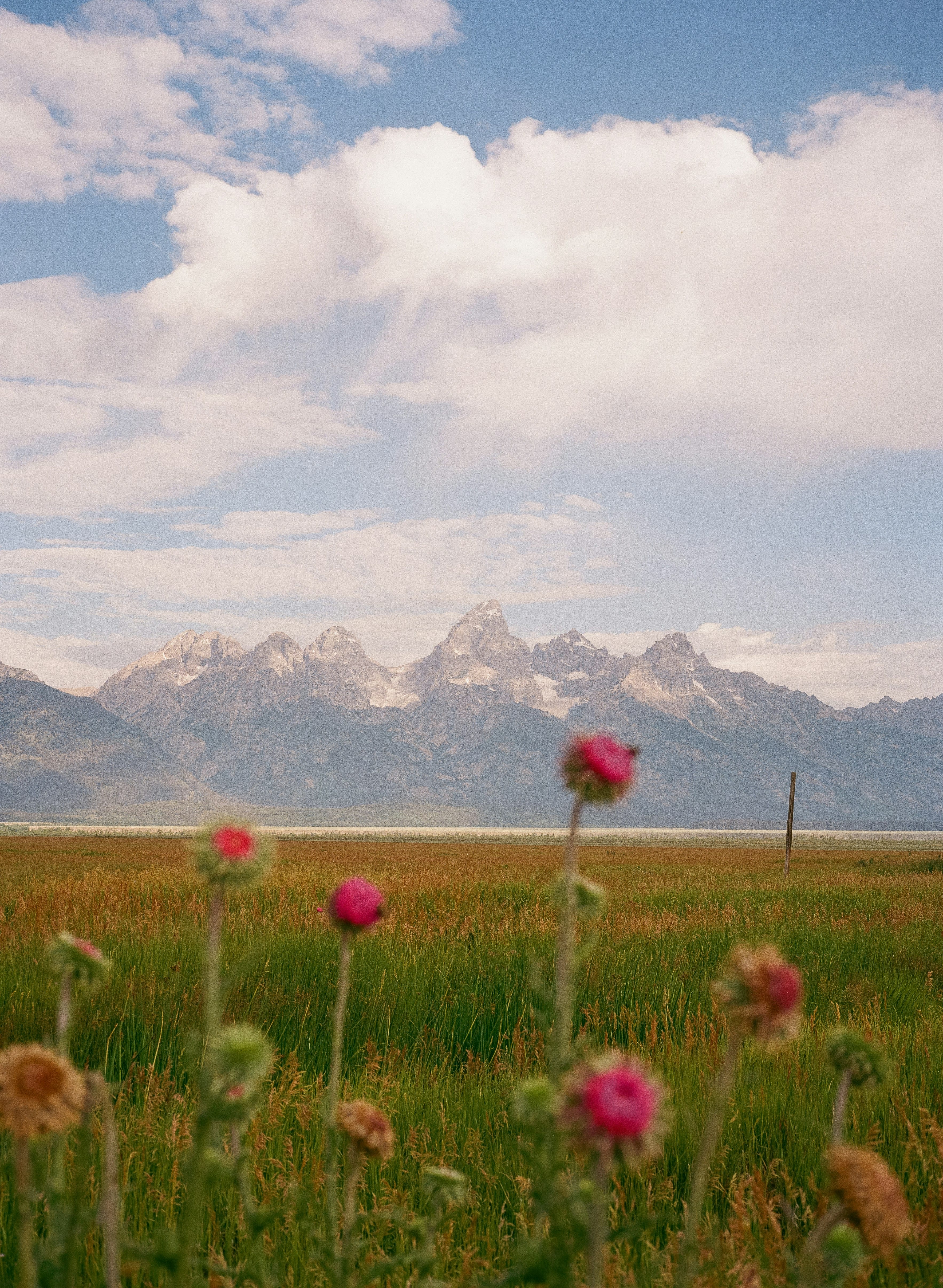The People's Break

THE FOUR MAIN BREAKS AT SANO GO BY DOGPATCH, OLD MAN'S, FOURDOORS AND THE POINT. THEY ATTRACT SURFERS ACROSS GENERATIONS.
For photographer Gabriella Angotti-Jones, there’s something sacred about San Onofre.
IT'S TOO EARLY, and I’m tired. I squint in the sunlight, a slight pressure behind my eyes, radiating to my sinuses—a combination of dehydration, lack of sleep and a little bit of anxiety.
Still, I paddle out into a clean, 3- to 5-foot morning. The sky is clear and blends into the sea, making it hard to find the horizon. No wind blows. Everything is smooth—the sky, the surface, my brain.
Like most surfers, I have a complicated relationship with surfing. On top of balancing my own expectations—of the conditions, of my own abilities—I also have to factor in other people. What ruins a session for me is when someone drops in on me or has bad vibes. Pretty much every break has a set of rules, with its own self-appointed sheriffs to police it.
Every break, that is, except at San Onofre Surf Beach.
At the storied public beach south of San Clemente, the unwritten rules somehow allow for multiple drop-ins on a single wave. And every single person on that wave somehow seems happy about those drop-ins.
“It's pretty ethereal, the way that the landscape and the cliffs kind of meet the sea… it's just very pristine.”
Before SanO was a surfing beach, it was part of a site called Panhe, a village of the Acjachemen people, who thrived there for some 10,000 years. It was one of their largest settlements, on land considered sacred. Eventually it was colonized by Spaniards, then requisitioned for the U.S. Marine Corps. After the surfing beach became a part of Camp Pendleton in 1942, surfers would sneak onto it, breaking the law to paddle out.
In 1969, president Richard Nixon bought an estate overlooking an epic break at Cotton’s Point, just north of SanO. It became his “western White House,” under heavy Secret Service detail. But local legend has it that a group of San Clemente locals convinced the president to allow surfers on the beach. In 1971, with Nixon’s blessing, the Department of the Navy started leasing San Onofre’s beaches to the state, and they’ve been public ever since.
In the last 20 years, surfers, environmentalists and Native activists fought back a proposal to build a six-lane toll road right through San Onofre State Beach. Legislation, thankfully, now prevents it. SanO today is an easy place to rally around: The waves are consistent, and on a sunny day, it’s full of families, old heads, beginners, pros. It isn’t unusual for a stranger to pop by for some wax or just to chat. I’ve learned so much about the history of the place just from stopping to talk with random old dudes—who sometimes even point out secret little waves.
SanO’s vibes are grounded, mellow and soft—a refreshing alternative to some other surf spots in Southern California, which can feel urban and chaotic, where the waves are sometimes a bit slammy. Every time I paddle out at SanO—no matter my mood, no matter how tired I am—I think about the history of the place. I remind myself that it’s sacred land, that its vibes are literally protected. And that’s how most people treat the beach—like they know it too. It’s a place where I can just be, enjoying the ocean and my friends.






